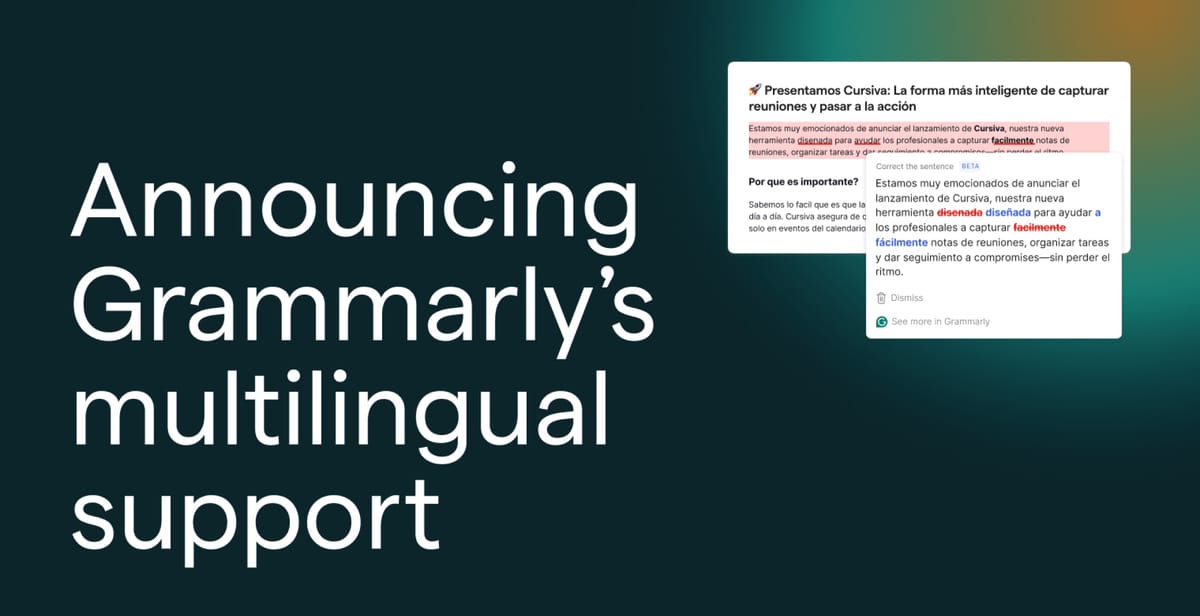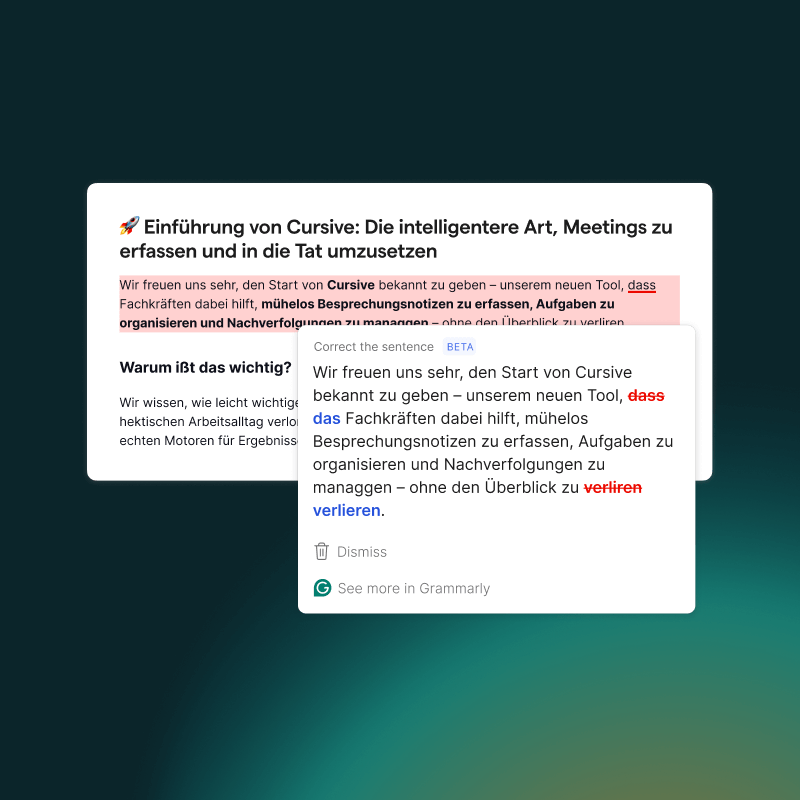
Sixteen years. That's how long Grammarly users have been asking for the writing assistant to work in languages beyond English. Today, the company is finally answering that call, launching support for Spanish, French, Portuguese, German, and Italian—though it arrives in a market where competitors have been multilingual for years.
Key Points
- Grammarly adds 5 new languages with grammar checking, paragraph rewrites, and translation to 19 languages
- The expansion addresses the "number one feature request" since the company's 2009 founding
- Competitors like LanguageTool already support 30+ languages, making Grammarly a latecomer
The expansion isn't just about spell-checking in new languages. Grammarly is bringing its full suite of AI-powered features to these five languages, including grammar corrections, paragraph-level rewrites that adapt tone and style to sound more native, and in-line translation capabilities to 19 different languages. That means you can write an email in Spanish and instantly translate it to Japanese without leaving your document—something that matters more than ever in our increasingly global workplace.
"Even as we work toward our broader vision to become an AI productivity platform for apps and agents, we're still deeply committed to enhancing the core Grammarly writing experience that users rely on," says Ailian Gan, Director of Product Management at Grammarly.
While Grammarly has spent over a decade perfecting its English-language algorithms, competitors haven't been sitting still. LanguageTool, an open-source alternative, already supports more than 30 languages and dialects. ProWritingAid, another popular option, remains English-only, but tools like Microsoft Editor leverage the tech giant's vast resources to offer multilingual support across Office apps. Even smaller players have recognized that the future of digital communication isn't monolingual—almost 50 percent of internet content is now generated in languages other than English.

Early trials with over a million Grammarly users showed "immediate, high adoption across key markets," the company says, which makes you wonder why it took so long. The answer likely lies in Grammarly's approach. Rather than rushing out basic spell-checking in multiple languages, the company appears to have waited until its AI capabilities could deliver the same sophisticated assistance it offers English users. Those paragraph-level rewrites that can shift your tone from formal to friendly? That's not trivial to replicate across languages with different cultural communication norms.
The features are rolling out today in beta across Grammarly for Windows, Mac, and Chrome, available to all users including those on the free tier (though with some limitations). The company promises more advanced clarity suggestions coming next year, similar to what English users already enjoy. They're also planning to add these multilingual capabilities to their recently launched AI agents in Grammarly's new AI-native writing surface.
But there's also a philosophical shift happening here. Grammarly built its reputation on the premise that there's a "right" way to write in English—fixing your grammar, suggesting clearer phrasing, nudging you toward more professional communication. Expanding to new languages means addresses different cultural norms around formality, directness, and style. What reads as professional in German might seem cold in Spanish. What's appropriately casual in French could be unprofessional in Japanese business correspondence.
The company says it's handling this by building language-specific models trained on native speech patterns, not just translating its English rules. That's crucial, because anyone who's tried to use Google Translate for professional communication knows that literal translation rarely captures the nuance needed for effective business writing.
Six languages is still a narrow slice of the world’s linguistic diversity, but for Grammarly, it’s a big leap from one. And it’s one that might keep the app relevant as AI-powered writing help becomes a default feature in everything from word processors to email clients.

